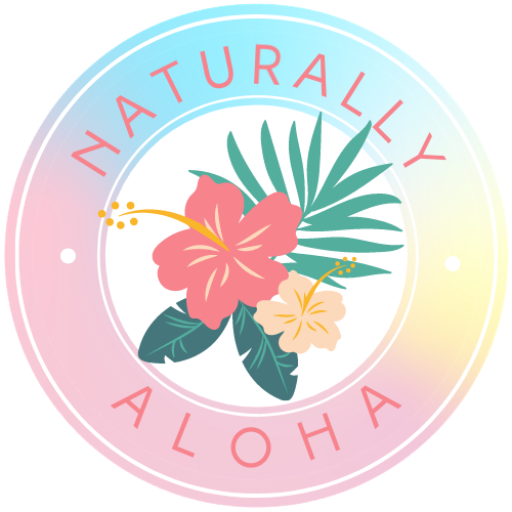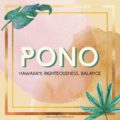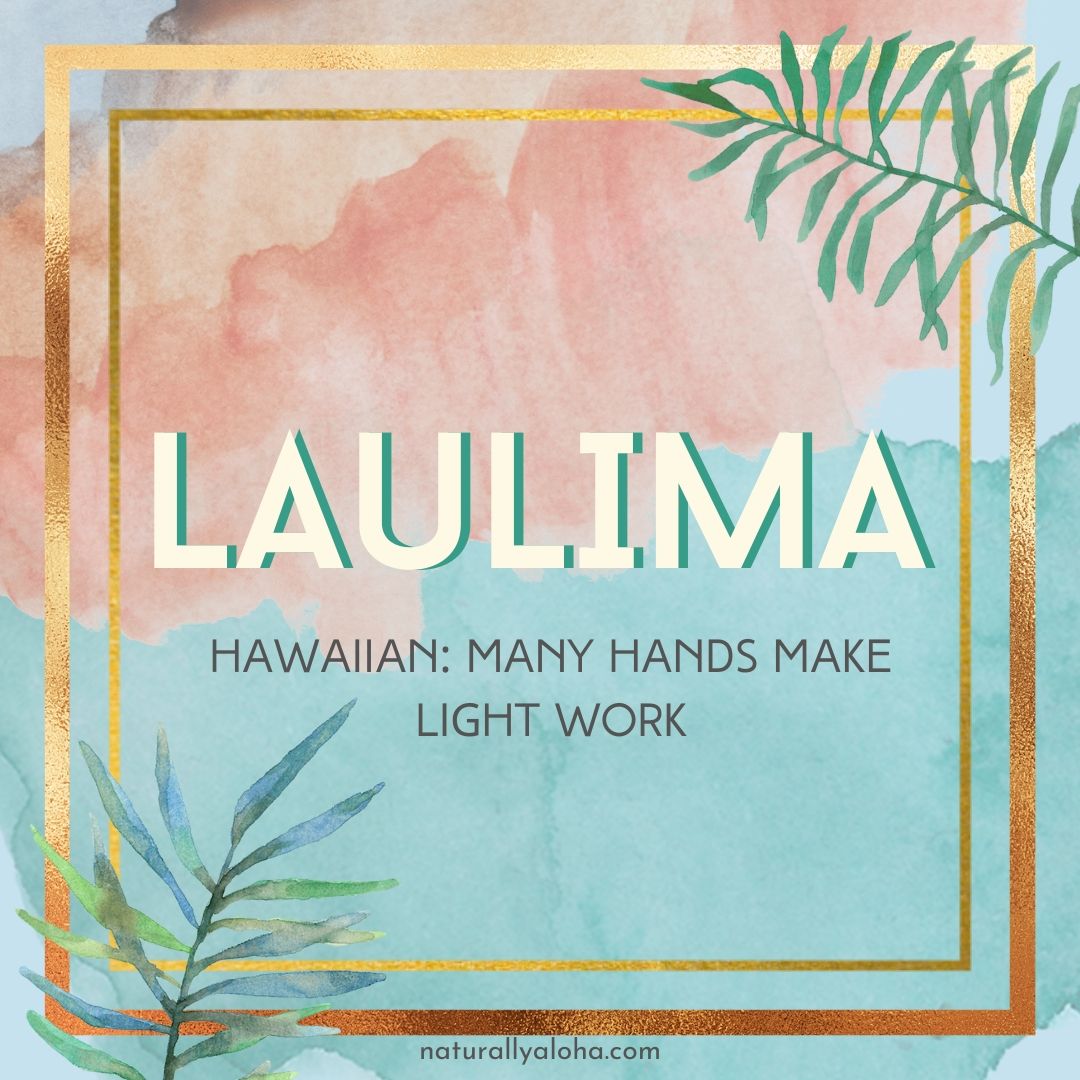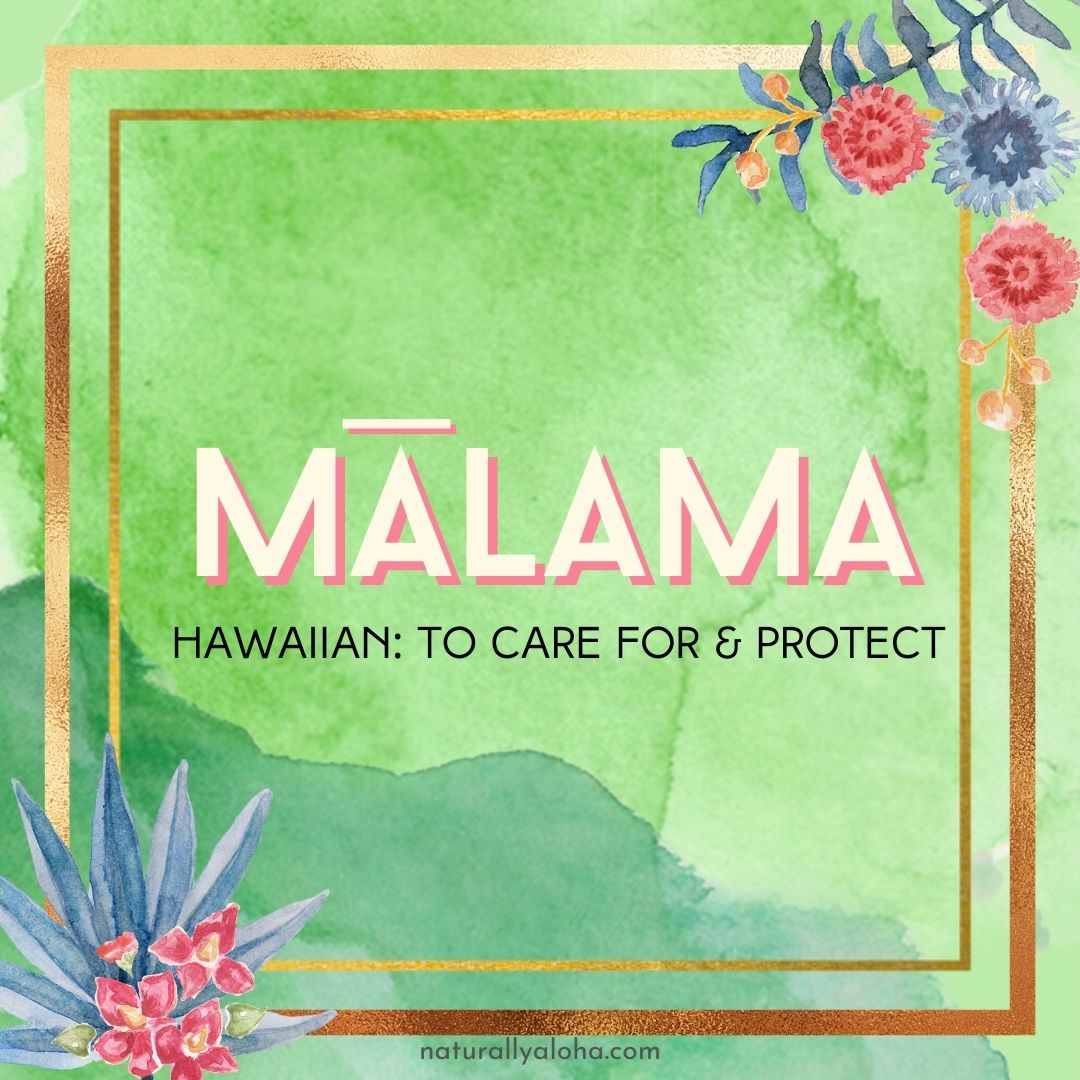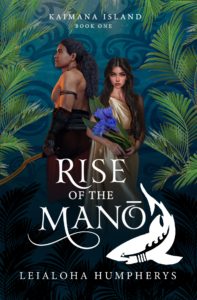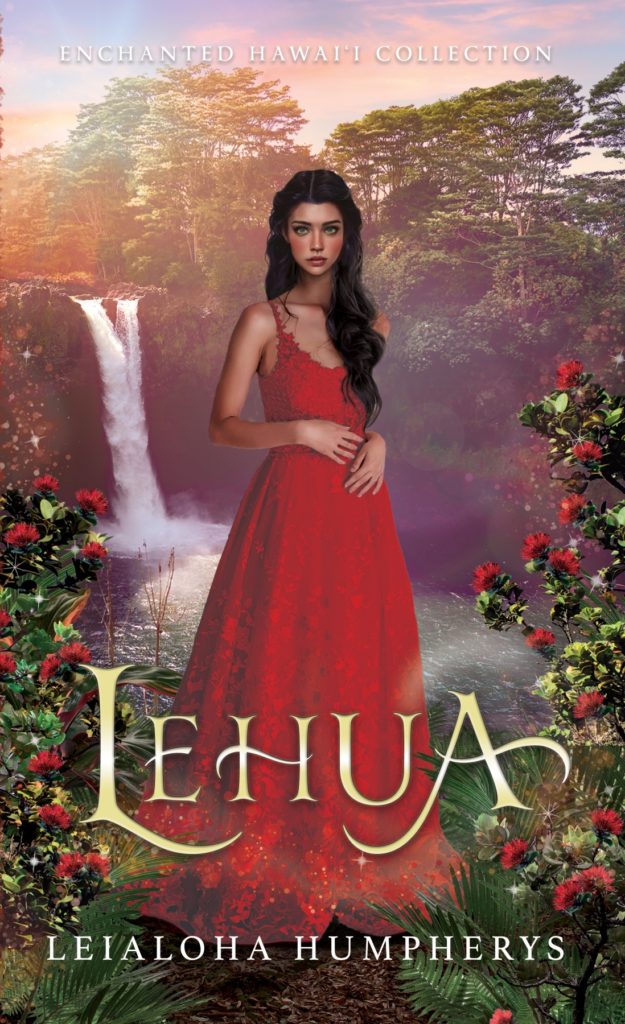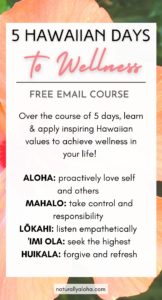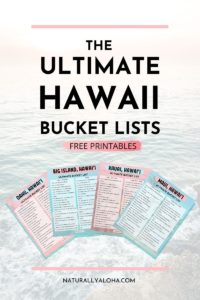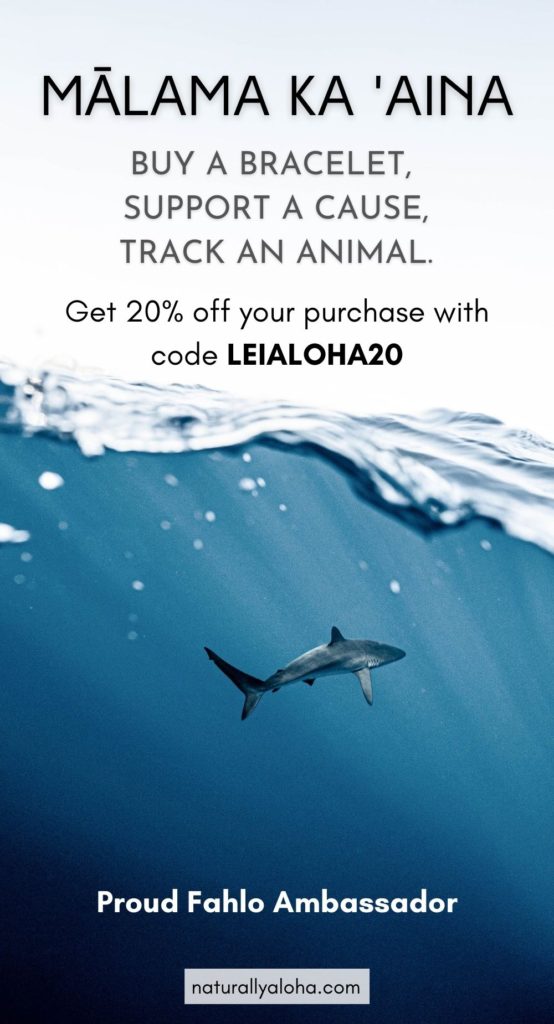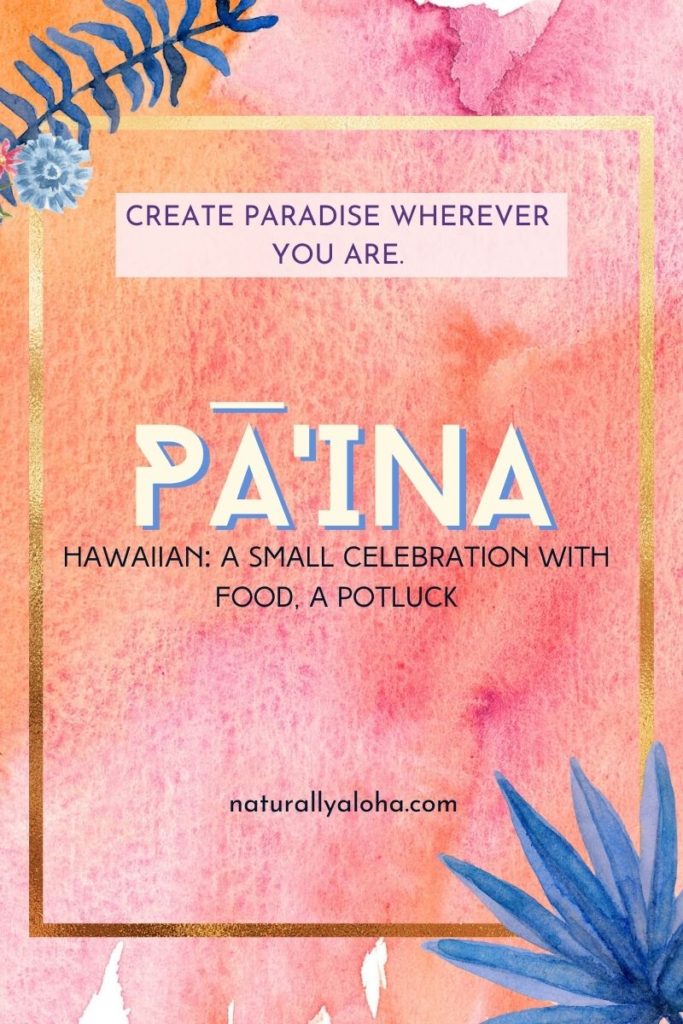
The Hawaiian word pā’ina is a small party, potluck, or dinner. The Hawaiian word ho’olaulea is a large party or celebration. No blog about Hawaii would be complete without a discussion on food. Food plays a powerful role in every culture, as it brings people together, nourishes the body and spirit, and makes us all feel better in general. Especially in Hawaii, never underestimate the power of food to open hearts and spread aloha.
The Hawaiian luau portrays the value of pā’ina
The Hawaiian luau draws people to touristy night shows, full of music, dancing, and traditional luau food. The dancers, with their colorful costumes, hip-shaking action, fire knives, and bright smiles, light up the stage. The pounding of the drum fills the salty night air, and the smell of food makes any person’s stomach growl in anticipation.
The luau plate is a pageant of colors: green laulau with salty, hot pork in the center, pink poke, red lomi lomi salmon, tender kalua pig, white rice, mac salad, chicken long rice, white squares of haupia, and, of course, purple poi. Occasionally, depending on who hosts the luau, shoyu or katsu chicken, purple sweet potato, or teriyaki beef is added to the plate. This is a taste of the islands, a plate that probably can’t get more traditionally Hawaiian.
Food nourishes us
No matter if the visitor to Hawaii gets a taste of this ‘ono (delicious) food at a tourist luau, or a family member’s luau–baby’s first birthday, a wedding, graduation, and anniversary–good food and entertainment does something for the soul. When we eat well, we feel well.
Although luau is the most commonly used word in Hawaii for a feast, I grew up using the word pāʻina, which is a meal, dinner, or small party with food. Pāʻina is a time for us to gather and appreciate one another, all over a delicious, heart-warming meal. With pāʻina, we learn how to use food to serve and give, bring our loved ones together and bond, and celebrate life.
Using food as a tool to assemble, meet, and love one another, we create a space of aloha. Our hearts are never far from Hawaii when we learn to use food in the right way for ourselves and others.
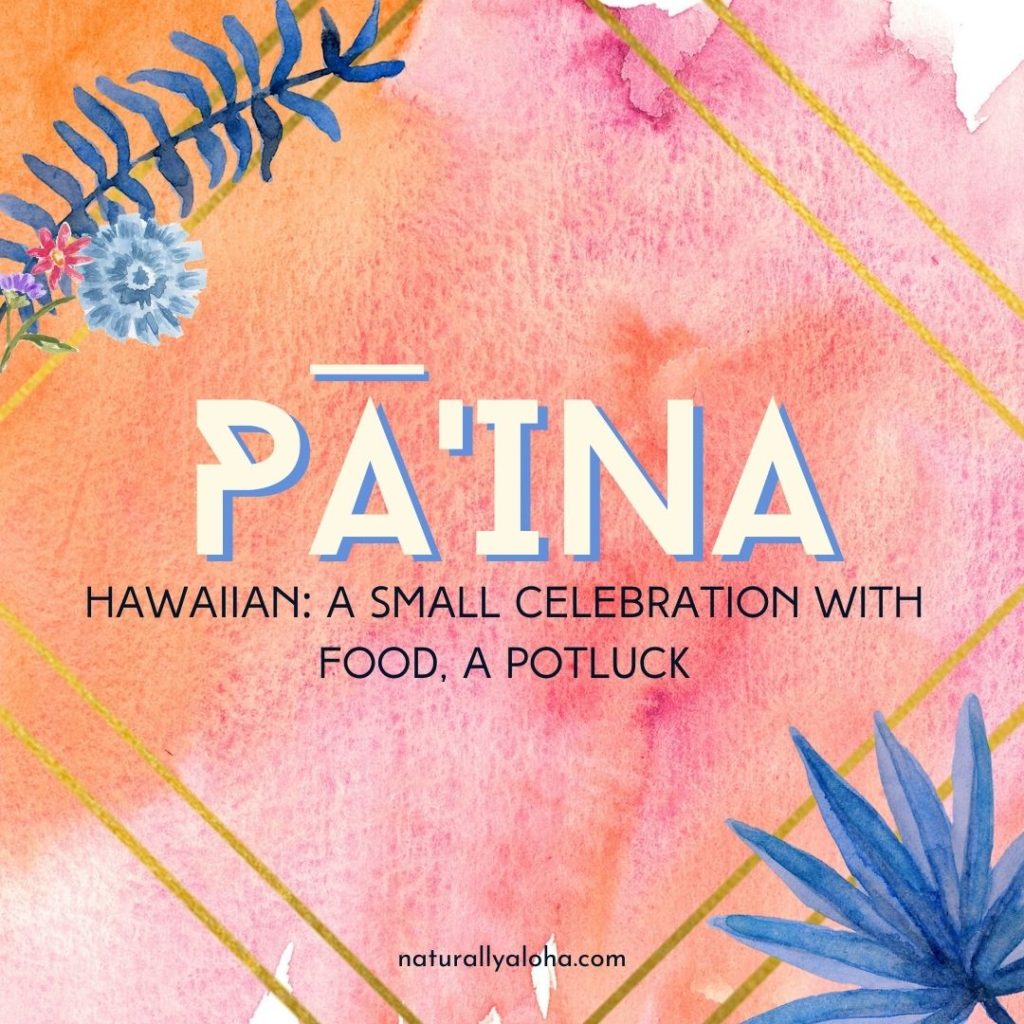
Have pāʻina for others
No matter the event, my high school classmates and teammates always talked about having pāʻina. They wanted to have a party, so we had pāʻina for big things and little things: when we finished a test, for someone’s birthday, when we had a special sports practice, on weekends after races and sports events, and the list could go on. I couldn’t always bring food because of my family’s circumstances, but I did enjoy the idea of celebration.
We should celebrate both little and big successes in life. How often do we get down on ourselves because we focus on the negatives? “We didn’t do this, we didn’t do that, and we failed at that…” In our culture, and with the rise of social media, each of us tends to focus only on our flaws and weaknesses, the negative stuff.
But what about the good things we do? All of us do great things every single day. While we don’t need to host a big party or have plenty of guests over, how can we celebrate the goodness of our lives and others? After a long day of work, I definitely savor a meal–I earned the meal.
When we had pāʻina in high school, everyone brought food to contribute, and we just enjoyed one another’s company. We were able to kick back and relax, including the teacher, for just a moment. It was a celebration of little and big victories.
Pā’ina celebrates little and big victories
But the concept of pāʻina can go even further than a little get together. For those with mental illness or debilitating struggles, a pāʻina can mean just celebrating the fact we got up and put ourselves together for the day. For those who work hard at their jobs to provide, the pāʻina can include spending meaningful time with loved ones.
There are so many reasons to have a pāʻina. We don’t have to do anything huge or special, like a ho’olaulea, which involves lots of people, food, and usually dance. But we can just do something small, yet rewarding. We should give ourselves and others credit for the big and small wins in life.
Know limits
I had an aunty who always said, “No limit!” when we visited her house. She brought out pan after pan of pani popo (rolls in coconut pudding), laualau, and made one fresh batch of rice after the next. When we slowed down, she still made other food, as if she expected a second wave of hunger to wash over us. I could never imagine her doing anything else in life except cooking… because she always had food in the house, and she always made sure we ate.
My siblings and I remember her words: “No limit!” She said it over and over again, placing more food in front of our loaded plates. I was only in my pre-teen years, but I had already developed a bad relationship with food. To me, anything I put into my body made me fat. While the food tasted good, all I could think was that this would be some extra pounds I wouldn’t be able to lose.
The truth about food
At some point in our lives, every one of us realizes we might have a bad relationship with food. Some of us have “no limits” when it comes to food: we eat when we’re bored, sad, tired, happy, and angry. We eat any kind of food–good and bad. Some of us have no limits on our mental relationship with food: we think (as I did) that any food entering our bodies does it no good. Some of us eat food uncontrollably, unable to stop.
With pāʻina, we know our limits. It’s true that when we attend parties, we usually find ourselves gouging on the food, eating more than we normally would. It’s just a fact that some of us are social eaters, eating more when we’re with people. And that’s ok–eating food together symbolizes becoming a part of one another’s lives, partaking of and sharing in each other’s goodness and love.
However, we should always know our limits. Do we have a tendency to only focus on the food? What about the people, the reason for gathering?
Even in our personal daily lives, do we know our limits with food? Pāʻina especially tastes delicious when we deserve it. Are we living our lives so the food tastes deserving? Hawaiian food isn’t always the healthiest food, and I’m aware of that. This is a reason I don’t eat Hawaiian food all the time! It tastes delicious, but it’s also just kind of heavy. Do we know our limits on “treats?”
When we create a better relationship with food, knowing our limits, we feel better about ourselves. Food becomes a tool that we use to nourish ourselves and others, sharing greater aloha through a physical means.
Pā’ina nourishes joy
When my little sister graduated from college, she and her husband moved right away. It was a busy time of life, so we didn’t get to do anything to celebrate. About a month or two later, I told her we were going to have a pā’ina to celebrate her receiving her degree.
It meant so much to her, but it also meant a lot to me. As I served her, I felt a nourishment of joy–not only from the food, but the company and celebration. I’m so grateful for the value of pā’ina. It taught me how to celebrate life and nourish the good in life. Too often we focus on the negative, but there is so much good being done, and so many positives!
So have a happy pā’ina—for all your little and big successes!
With aloha,
Leialoha
P.S. Want to learn more about the Hawaiian values? Check out my Free resources to bring aloha home!
Let’s hear it from you!
How do you celebrate pā’ina with your loved ones? Let us know in the comments below!
Share this on Pinterest!

